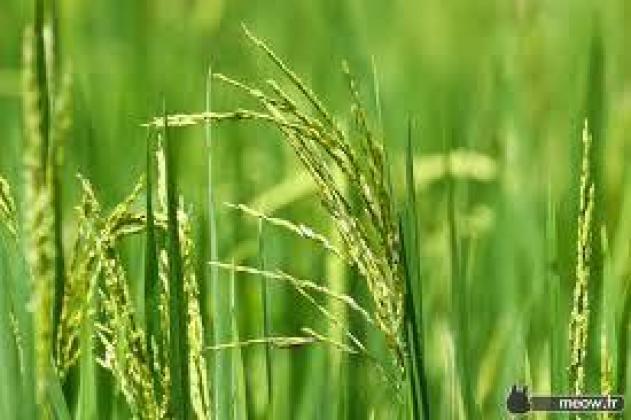
Jim Bradshaw
Rice farming was well established in Louisiana but was just getting started in east Texas in 1900, when Texas Farm and Ranch magazine sent W. C. Moore to get some tips on how it should be done.
He found that “the outlook for rice culture was never brighter” in south Louisiana, partly because farmers had learned how to efficiently irrigate their crops, partly because the United States was still a heavy importer of rice and offered big marketing opportunities — and also because millers used every little part of a rice kernel.
Moore found about 450 miles of canals in Louisiana used to irrigate 140,000 acres of rice. The canal companies typically took one-fifth of the crop in payment for the water if the farmer owned the land. The companies took another fifth as rent if they owned the rice fields. It appears that both the farmer and the canal company made money under that arrangement.
“All the canal companies own more or less land,” Moore reported, “and it is a well known fact that they pay handsome dividends on the capital invested [to dig them].”
Moore also looked at deep wells near Jennings and Welsh, and estimated that 15,000 acres were irrigated by pumping systems like these that were still in their infancy.
“The great advantage of well irrigation is that it will bring into cultivation thousands of acres that canals can never reach,” he said. Drillers charged three dollars a foot for an eight-inch well and two dollars a foot for a six-inch well. The wells Moore saw varied from 160 to 200 feet deep.
“These are not artesian wells, and a pump and engine costing $800 are required to pump water from the well onto the land,” Moore wrote. An eight-inch well could irrigate 200 acres, a six-inch well about 150, he said.
That wasn’t cheap. A 200-foot, eight-inch well with an $800 pump would cost a total of $1,400, which would be about $45,000 today. But it seemed to be a good investment. Moore wrote that “this method of rice irrigation has been so far eminently successful.”
The end product of all of this was “a good, hard, flinty rice,” that milled out to 100 pounds of clean rice to the barrel.
“This one hundred pounds would be divided about as follows,” he said, “Sixty pounds of head rice, twenty-five pounds of number two, and fifteen pounds of brewers’ rice.” But the millers didn’t stop there; they sold the hulls as cattle food, and even gathered up dust generated in the milling to be made into buttons, beads, and even piano keys.
“After the outside hull has been taken from the rice, there is a bran resembling wheat bran, which is very fine for stock of all kinds, and next to the bran comes what is termed polish,” Moore found.
“Rice polish” he said, “resembles very much buckwheat flour, and is used quite extensively for food in foreign countries … [and] is being very extensively used in manufacturing numerous kinds of trinkets, such as small buttons used in shirts and which resemble the bone button. It is also used in making keys for pianos and resembles ivory so closely that an expert can hardly detect the difference. White door knobs are also another commodity from rice polish.”
I asked Bruce Schultz, the communications specialist at the rice experiment center at Crowley, about this and he said, “It sounds like the polish is just the dust from polishing the rice grains after the bran layer is removed. I’m sure synthetic materials are cheaper and easier to make [today].”
I did a quick web search for “rice polish” and found that it is used as a base for some cosmetics in Japan, but, as Bruce suggests, it has been a long time since it was used in the keys for your Steinway.
A collection of Jim Bradshaw’s columns, Cajuns and Other Characters, is now available from Pelican Publishing. You can contact him at jimbradshaw4321@gmail.com or P.O. Box 1121, Washington LA 70589.
